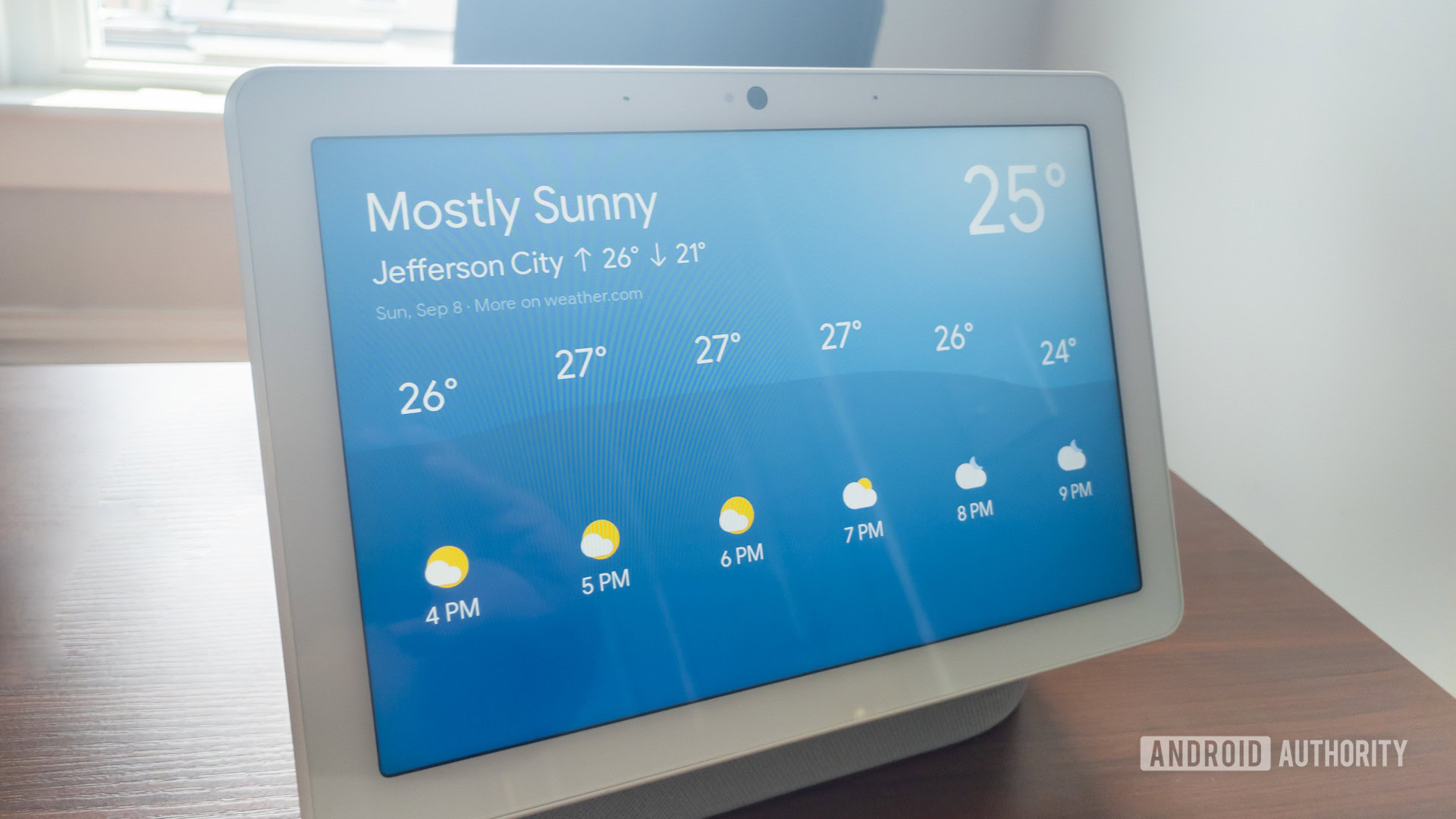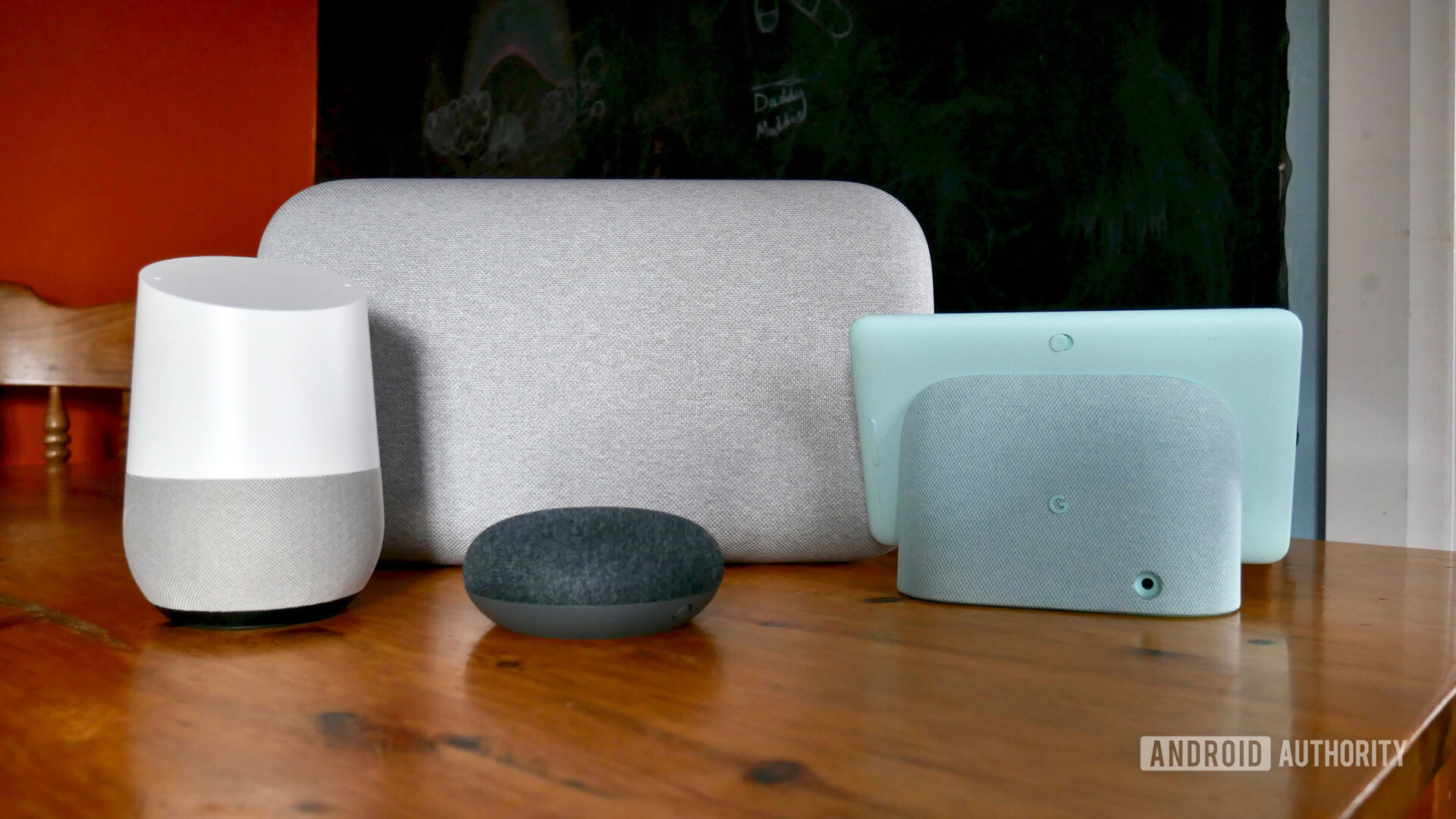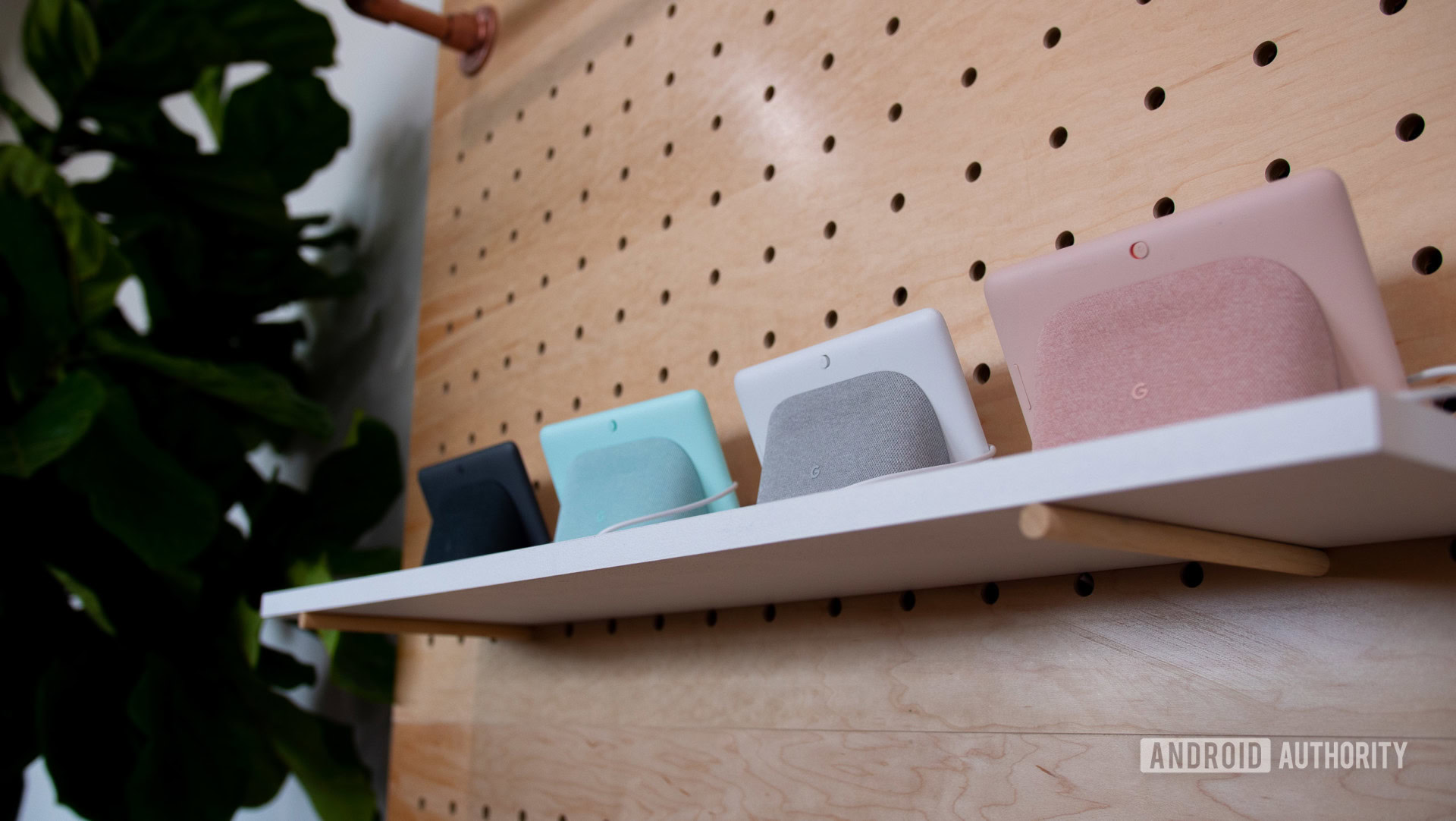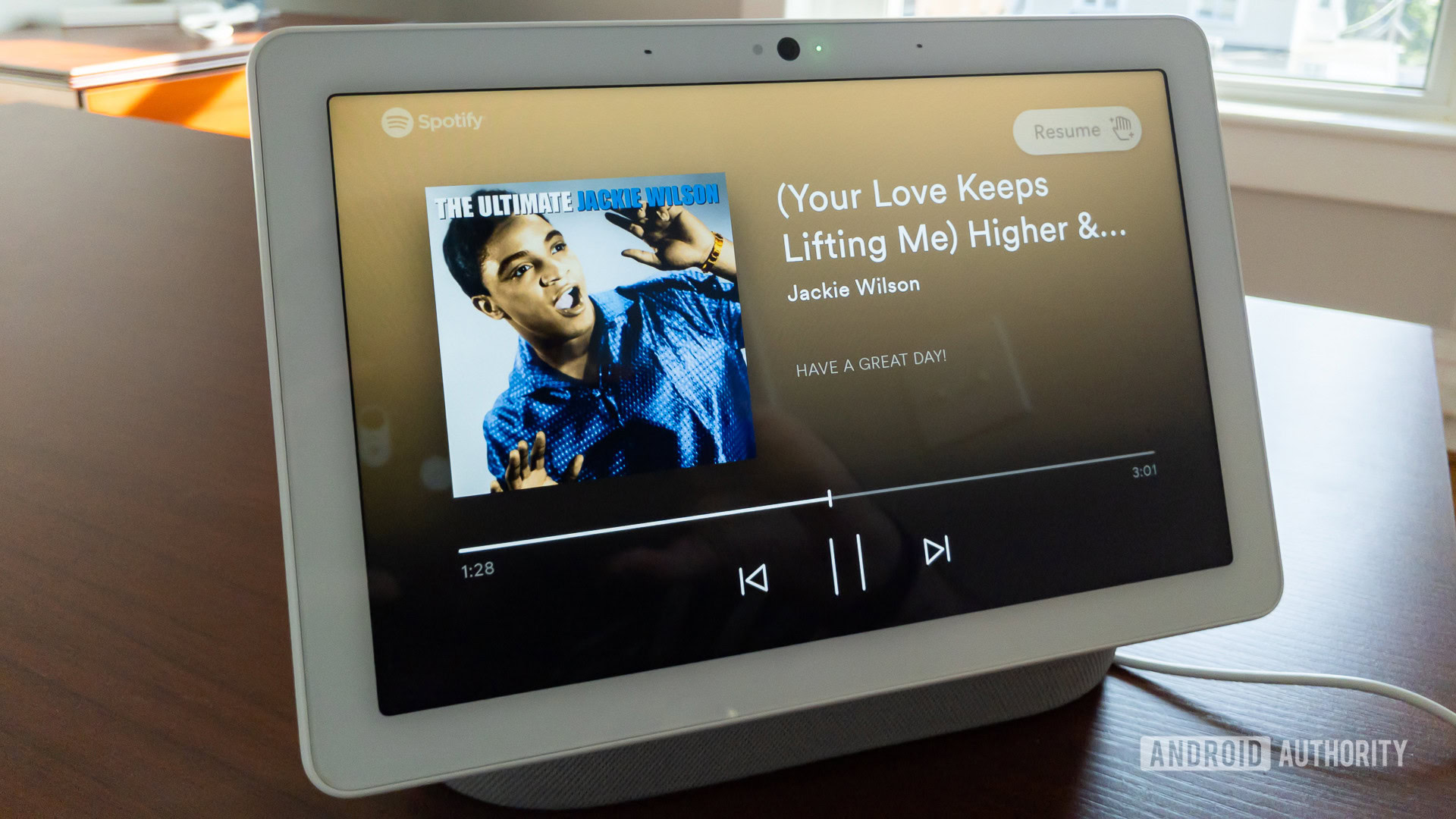Affiliate links on Android Authority may earn us a commission. Learn more.
A month in, I barely use the Google Nest Hub Max (yet I still recommend it)

A little over a month ago I reviewed the Google Nest Hub Max. In my review I praised the device and said it was the best smart display on the market, I still stand behind that. There’s a lot to love about the Nest Hub Max, especially the nest cam features. The speaker quality is great. The addition of a display makes it capable of things my Google Home can’t do. There’s a ton of features here.
Despite all these advantages, I’ve come to the realization that I rarely ever use my Google Nest Hub Max anymore, at least not the way it was intended: as a smart display.
So why don’t I use it anymore, even though I still recommend it to those who ask? Good question.
Why I don’t use my Google Nest Hub Max anymore

I use my Google Home a lot for things like reminders, alarms in the kitchen, playing tunes, the list goes on. I do actually use the Google Nest Hub Max some as well, I just typically use my voice to control it.
Sure I will sometimes use the UI to put on video or control my smart home, but most of the time I control my smart home by voice. If I want to watch a video I tend to just use my phone, laptop, or television. It’d say that over the last two weeks I’ve directly interacted with the display less than five times. For me, there’s just not many situations where I actually feel the need to use a smart display’s screen. And while the Google Photos pictures are nice, it’s not like I spend a lot of time staring at old photos like some nostalgic old man.
One area where smart displays make the most sense is in the kitchen. This is a place you might want to watch video passively while cooking, and there are some great recipe book functions baked into Google Assistant-powered smart displays. That’s the place I used the Hub Max the most at first, but then the honeymoon phase ended.
The Nest Hub Max has a lot of great features, but I just don't see many reasons to use its display on a regular basis.
The recipes interface and step-by-step features are great but the recipe catalog is a bit limited, compared to just putting my laptop in tent mode and using it in the kitchen. With a laptop I can bring up any website for a recipe, and I can watch videos and other stuff too.
In fact most of the things I can do with my smart display I can do using my phone or laptop. The steps to get there aren’t so intuitive as the Hub Max’s UI, but these traditional devices can do all the same things and more. Google could also solve the UI issues by simply bringing its Assistant Ambient Mode features to more Android devices or — better yet — baking the UI right into the Home app. Of course Google wants to sell smart displays, so this probably won’t happen anytime soon.
I think the real problem is that a smart display requires you to walk up to it and touch it to interact. OR I could pull out the ‘smart display’ that is already in my pocket, my Pixel 3 XL. Saves me the trip.
Now you could apply the same argument to Google Home. You can do all those assistant things on your phone. Except, Google Home can pick up from far away and doesn’t have the lockscreen limitations my phone does when it comes to utilizing voice triggers. This gives Google Home a bit more utility.
Does it matter that I don’t use my smart display as an actual display?

If I’m being honest, it probably doesn’t matter that I don’t use the Nest Hub Max’s display that often. I still get my money’s worth.
The Nest Hub Max is essentially a security camera and a smart speaker in one package, even if the security camera isn’t quite as flexible as a stand-alone cam. If someone buys a security camera and a Google Home separately they are easily going to spend around the same or more than the Google Nest Hub Max. And yet the Max has the added bonus of slightly better sound quality than the standard Google Home and has a display for the rare times I do want to use it. It also happens to make for one heck of digital photo album.
If I didn’t already have a Google Home, the Nest Hub Max would absolutely get tons more use — so the fact it’s not used as often is mostly down to placement. Ultimately the Google Nest Hub Max makes sense because it fills the role of several stand-alone products. But (arguably) for many users, the display is more of an extra than the main draw.
Smart displays are still missing a killer feature, but maybe that’s okay

I enjoy the Nest Hub Max, even if I don’t use it as much as I originally thought I would. Still, I can’t help but feel like smart displays are missing a killer feature. They aren’t portable like tablets or phones, but do many of the same things and yet tend to have much more limited functionality. There are no apps and (aside from the Show) there’s no web browser. Maybe that’s the whole point: smart displays aren’t meant to be much more than a smart speaker with some extras.
I asked several of my colleagues that own smart displays like the Nest Hub or Amazon Echo Show if they use their device regularly and if they enjoy using it. Most said it was a great purchase, though admitted they didn’t necessarily interact with the display that much. While some of my colleagues did interact some with the display for recipes, video, or to control their smart home setup — the general consensus was that they didn’t regularly interact with the display. Still, no one seemed to regret buying a smart display.
Smart displays don't really have one killer feature, but maybe they don't need to.
At the end of the day, smart displays aren’t bad buys but you should know what you’re getting into. There’s just not enough utility to the actual display to make it the main draw, and so if you’re hoping to use it as a video viewing device and for other display heavy functions, you may likely end up disappointed. There are just so many other devices (your phone, tablet, or TV) that do a better job here.
Smart displays are pretty much for those who are already considering a smart speaker but wouldn’t mind the idea of a display for the rare occasions they’ll use it. For the functions offered, smart displays aren’t that much more of an investment than smart speakers anyhow. Take the Nest Hub, it’s $130. That’s just $30 more than a Google Home, and yet you get a digital picture frame and display that adds a few extras. Whether you use them much or not, it’s not like you’re paying a ton more.
My only real issue is that marketing doesn’t make this clear. I can see how some users might walk away disappointed thinking smart displays are going to offer more. What about you, do you find smart displays worth it? If you own one, do you use the actual display regularly?